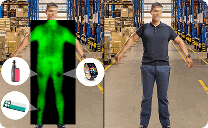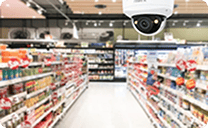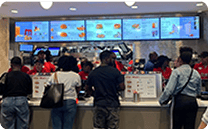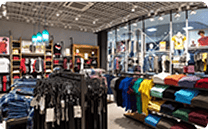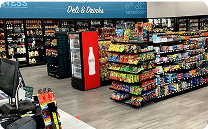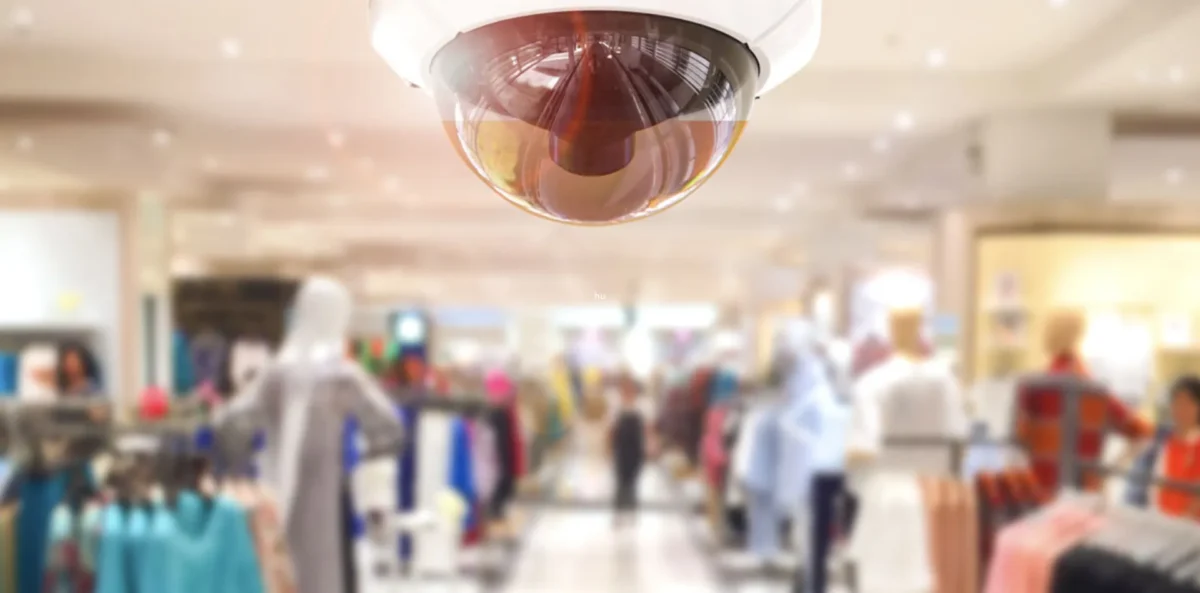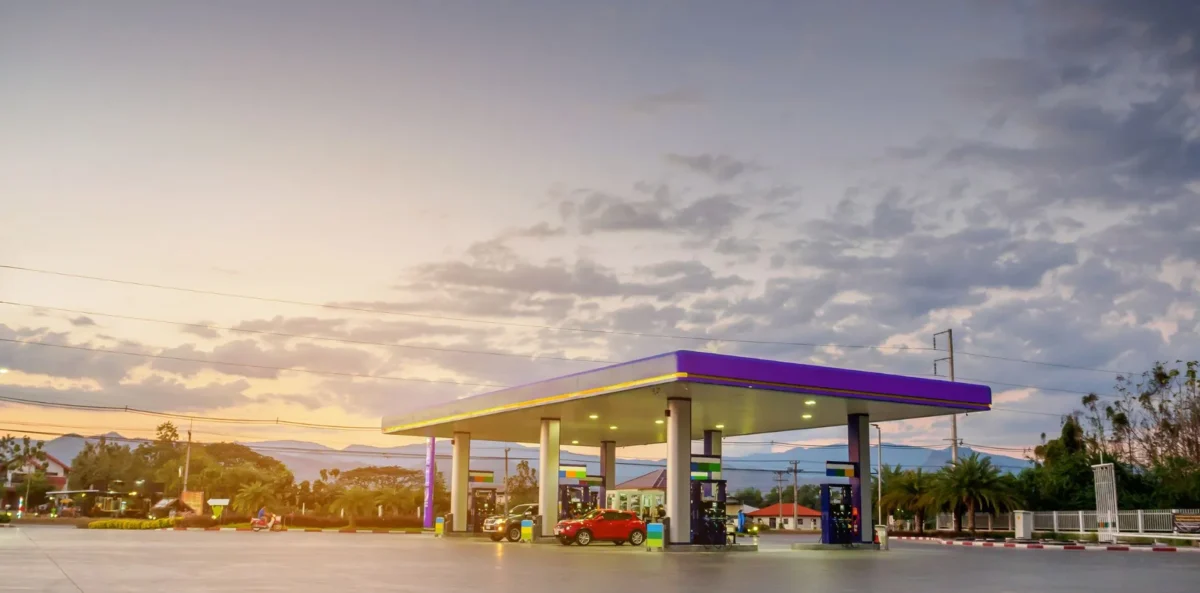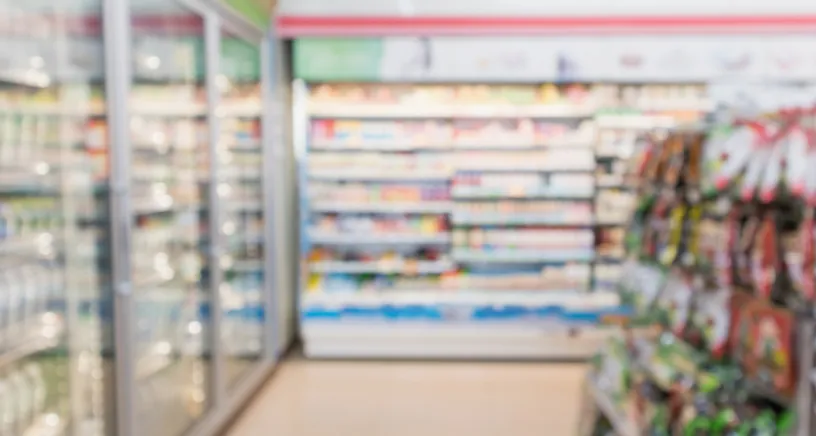Finding new ways to unlock higher levels of efficiency and performance can be a full-time job for franchise owners and managers on its own.
Luckily, technology is evolving, letting business owners leverage data right from their cameras and POS to optimize their business performance, using actionable insights to improve efficiency and performance.
With tips from the DTiQ team, this article will arm you with the knowledge you need to make video surveillance a powerful tool in your efficiency and performance toolkit.
The Evolution of Video Surveillance
20 years ago, the extent of video surveillance for many businesses was old cameras hanging in a corner and a dusty “Cameras on Sight” sign. It never said if the camera actually was working, however.
And for years, the mere sight of a camera was enough of a deterrent. People would assume that the sight of cameras would strike fear in shoplifters and staff alike, giving them enough fear of being seen to keep their sticky fingers to themselves and keep off their phones at work.
Throughout my 20-year career in the QSR space, video surveillance has truly undergone a transformation. It has become an essential part of everyday life and operations for most operators. The ability to view videos and follow up on operations and incidents right on your mobile phone has definitely saved time and upped the convenience for operators.
Donna Brower, 20 Years Industry Experience, DTiQ CSM, Former McDonald’s Manager & Operator
However, even the cameras that were working weren’t providing much of anything. The grainy, closed-circuit systems of the past would make it hard to see what was happening, let alone pull real-time analytics on efficiency and store performance.
In today’s digital age, advancements in technology have led to high-definition cameras, cloud-based storage, and real-time monitoring capabilities. These improvements have allowed businesses to leverage video data for more than just security purposes.
Key Areas to Enhance Efficiency and Performance
As video continues to evolve, so do the use cases for video surveillance, especially when it comes to efficiency and performance.
Some of the key ways that business owners can leverage evolved video surveillance systems to improve their business include:
- Real-time monitoring
- Employee productivity
- Exception based reporting
- Staffing allocation
- More efficient (and objective) business-decision making
- Automated security measures
- Efficient resolution of issues on-site
Let’s take time to explore each of these areas — and tips that you can leverage to optimize each of these from the DTiQ team.
1. Real-Time Monitoring
Real-time monitoring may be one of the more “classic” ways one that assumes that video surveillance helps to ensure efficiency and a high level of performance.
Real-time monitoring is the idea that a user can log into the computer
However, you know the saying: there’s an app for that. And video surveillance is no exception.
As technology has evolved, so has access to real-time monitoring. Most video surveillance systems have a mobile app that business owners can go onto anytime, allowing them to see what the camera sees at any given time.
2. Employee Productivity
You know that your employees are on their best behavior when leadership is at the stores. But how do you confirm that same level of efficiency and performance when you aren’t there?
No doubt you know where this is going.
A video surveillance system serves as an objective tool to monitor employee performance and behavior. It also provides you with training opportunities, letting staff see where things didn’t go well. This helps you hold your team accountable for actions that they see taking place.
By fostering a culture of accountability, employees are more likely to stay focused and adhere to standard operating procedures.
3. Exception Based Reporting
Say goodbye to looking for a needle in a haystack — the needles are now being delivered right to you!
When you pair video surveillance with AI and reporting, you’re unlocking a whole new level of insights. This includes finding those “needles”, like suspicious transactions amongst the hundreds that are done each day.
Now having your managers review hours of footage to find suspicious theft is hardly an efficient way to work, which is why this part of video surveillance is such a key part of efficiency. Now the hours spent sifting through footage can be spent addressing those red flags.
Not only is it a better use of time, you’ll also likely see some savings on your bottom line. It’s less likely an offender who is using refunds for fraud is going to get the chance to do this numerous times when exception-based reporting is able to pull out a suspicious transaction the first time it happens. Don’t give your team the chance for things to go sideways.
4. Proper Staffing Allocation
Even if your staff aren’t on their phones, the wrong number of staff won’t allow even the most perfect of employees to be fully efficient.
With video surveillance, you can review your business needs and determine staffing from there. For example, if you regularly have an extra busy lunch rush on Thursday but you aren’t changing your staff numbers from the regular lunch rush, your team may be overwhelmed. This keeps them from being able to do their job efficiently, as they struggle to balance numerous responsibilities.
Using the data from your surveillance cameras helps you make the most of your team — bringing them in at just the right time.
5. More Efficient (and More Objective) Decisions
You face a lot of decisions when managing a business (especially as you expand across numerous locations). And as more opinions enter that decision-making process, as you hire, it can be harder to make decisions effectively and objectively.
Video surveillance, when combined with advanced analytics and artificial intelligence, empowers data-driven decision making. AI-powered video analytics can automatically detect patterns, anomalies, and trends that might not be evident to your team as they are working in the moment. This valuable information allows businesses to make data-backed decisions.
While your gut will always be a valuable check, having the data to make those decisions is always a valuable — and unbiased — opinion to consult.
Pro tip: You can have these business insights come straight to you with DTiQ’s SmartAudit™. This service is essentially completely customized to the decisions you want more insight on, as you work with the DTiQ team to customize your audits. From there, business overview is delivered right to your mobile application of each location’s performance without ever needing to leave your desk. Imagine how much more insightful your business decisions can be with these tailored actionable insights coming straight to your phone!
“The DTIQ team has been a great support to our Dunkin’ locations! We have caught several theft-related incidents from the SmartAudit™ services alerts and caught other loss prevention issues with the dashboards set up and the automatic weekly reports sent to us. The support team has been great and are quick to respond to anything we need with password resets, cameras not working, etc.”
Jennifer Copeland, Director of Operational Support
6. Automate Certain Security Measures
Staff would have to be leveraged as security measures in the past, especially at stores that carry higher-risk merchandise.
Think of convenience stores that have products like cigarettes, vapes, and alcohol just a grab away. In the past, areas like this would have to be monitored by staff. Having an employee that you are paying by the hour must hang out in one specific area to protect certain merchandise is hardly the most efficient use of those paid hours.
Cameras can take on those security measures. The proper camera placement becomes those security measures, capturing footage law enforcement can use in the case of theft, freeing up your team to use their time more efficiently, and serving as a deterrent to theft (especially when the cameras are in sight and very clearly on!).
Pro tip: Instead of using your staff as security, some people opt to hire external security. It’s worth noting that having security cameras that run at your store is also significantly cheaper than using physical security guards — and the cameras can provide a lot more insights beyond monitoring high-risk areas.
7. Resolve Internal and External Disputes in a Timely Manner
He said, she said, and they said issues within your internal team and with customers can be a huge distraction, preventing your store from running at its most efficient. The tension from unresolved incidents will also have an impact on performance, naturally.
You know the saying when it comes to getting to the bottom of a story — there’s three sides. Your side, my side, and the truth. Luckily, having video surveillance makes it a lot easier to get to the truth of the story, and a whole lot faster.
Say a customer insists that an employee was rude to them at the drive-thru window. Before a video surveillance system that integrates with your drive-thru, this would be a case of hearing all parties out. Chatting with the staffer, hearing the customer’s side, and very likely just giving in to the customer’s story in an attempt to rectify them being upset. Now, you simply pull up the transaction and can both see and hear everything! No more apologizing for poor interactions that didn’t take place.
Or say two employees get into a verbal altercation over an incorrect meal, both blaming each other. If you know the time and date, a smart video surveillance provider makes it easy to search for the footage (or leverage their team to do the searching for you). Pull up the footage, review with the employees about what could go better next time, and the incident is resolved with the objective truth as the cornerstone of what happened.
8. Safety & Security
While safety and security isn’t necessarily a direct way video surveillance enhances efficiency, it’s an important callout nonetheless.
Time spent stressing over safety and security concerns that a camera can address is time wasted. Some areas of safety and security that can cause a lack of efficiency or performance include:
- Collecting footage: Imagine, in the worst-case scenario, having a manager who is stealing from your location for a few months. Without an intelligent video surveillance system, you’re going to have to spend hours searching through footage — and hours is if you’re lucky. An efficient video system will have both programs in place and a team that make searching for the footage you need easy, therefore saving time and allowing an efficient process
- Searching for incidents on camera: Slip and falls can be a huge issue for businesses, especially when you do everything right. Your team mopped as much as possible, the wet floor sign was out, but… you can’t find the footage. However, this can apply to any incident. Time spent on incidents that shouldn’t be a large issue when you have the video to prove otherwise are going to eat into your efficiency.
Unlock Efficiency and Performance Insights with Video Surveillance
As video surveillance continues to evolve, so will the use cases for businesses to harness it to optimize efficiency and performance — in fact, businesses ahead of the curve are already doing this. With video surveillance’s ability to provide real-time insights, optimize staffing use, and foster a data-driven culture, business owners can feel empowered with data backing the decisions they make.
With the right approach and an industry-defining provider, video surveillance can be a driving force behind businesses unlocking a higher level of efficiency and performance.
Book a demo or contact us today if you want to see how DTiQ’s video surveillance system can help you achieve your efficiency and performance goals.



